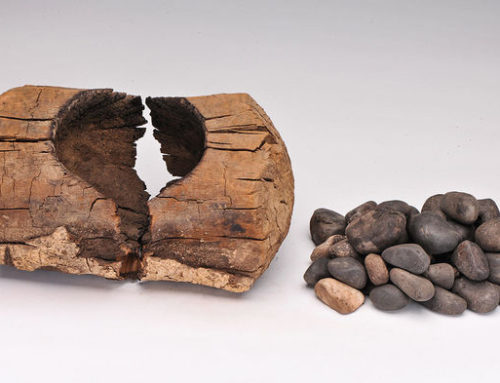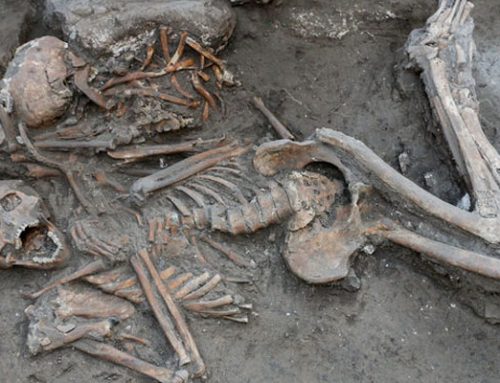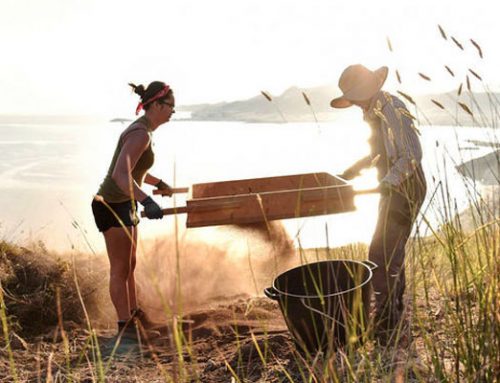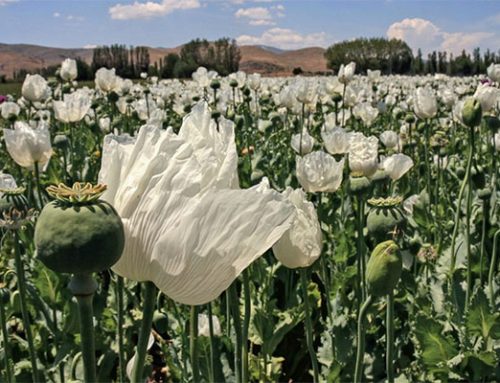
Indo-Pacific beads offer clues to ancient trading patterns. PHOTO: SHINU ANNA ABRAHAM AND P. J. CHERIAN/KCHR
In a small laboratory tucked into the Field Museum in Chicago, Illinois, Laure Dussubieux carefully positions a tiny bead so that a laser can drill a microscopic pit into its surface, releasing a puff of gas. A mass spectrometer then reads the gas’s composition, including the trace elements. The result is a unique signature that often can reveal how, where, and even when the glass was formed, Dussubieux explains. And that has turned humble glass beads into tools for tracing long-lost trade routes in the Indian Ocean (see main story). “I think it’s pretty great that you can take a simple glass bead, shoot a laser at it, crunch some numbers, and then get the recipe used to make the glass,” says Alison Carter, an archaeologist at the University of Wisconsin, Madison, and one of many researchers who show up regularly at Dussubieux’s door with their own colorful bits of glass. Around the vast Indian Ocean, peoples spoke different languages, ate different foods, and worshiped different gods. But they shared a love of glass beads, which typically were strung together to make colorful bracelets and necklaces. Enormous effort and skill went into making huge numbers of baubles as small as 3 millimeters in diameter in a dazzling array of colors. Difficult to date and organize into types, the artifacts were long neglected by archaeologists. Then, in the 1990s, archaeologist Bernard Gratuze of the French national research agency CNRS in Orléans began to pioneer bead analysis using lasers and a mass spectrometer; Dussubieux learned the technique as a Ph.D. student in his lab. Beads were often made locally of raw glass ingots that had been shipped great distances, and the new technique made it possible to trace the glass to its origin, revealing shipping and trade routes. For example, bead studies have shown that a glass formula using mineral soda appears to have originated around the 5th century B.C.E. in the Ganges plain of northern India and then spread south and east. When Dussubiex analyzed about 200 beads excavated at Khao Sam Kaeo, which emerged as a trading city on the Malay Peninsula beginning in the 4th century B.C.E., she found that many were made of this soda-rich glass. Thus, the raw glass was likely made in India and shipped more than 2000 kilometers east. In a study of Cambodian beads, Carter discovered that 1st century C.E. beads from the southeast of the country were made using potash—an indigenous Cambodian method—whereas beads in the northwest consisted of mineral soda glass from India. In later centuries, however, soda glass spread to southeastern Cambodia, perhaps a sign of rising Indian influence. Across the Indian Ocean, Marilee Wood of the University of the Witwatersrand in Johannesburg, South Africa, is using bead analysis to track trade routes along the southern coast of East Africa. Changing bead types reveal African ties to the Middle East starting around the 7th century C.E., followed by trade with distant Sumatra and then with India around 1000 C.E. “We have early glass coming from Southeast Asia,” she says. “This is a very different pattern than you find in the north” coast, where Middle Eastern and Indian glass predominates. Carter, like many of her colleagues, praises Dussubieux for her analyses and patient work training others to read beads. She’s “a walking database of glass types,” Carter says. “Combined with the body of work from Laure and others, the glass bead can be tied into a whole network of ancient glass production and trade.




